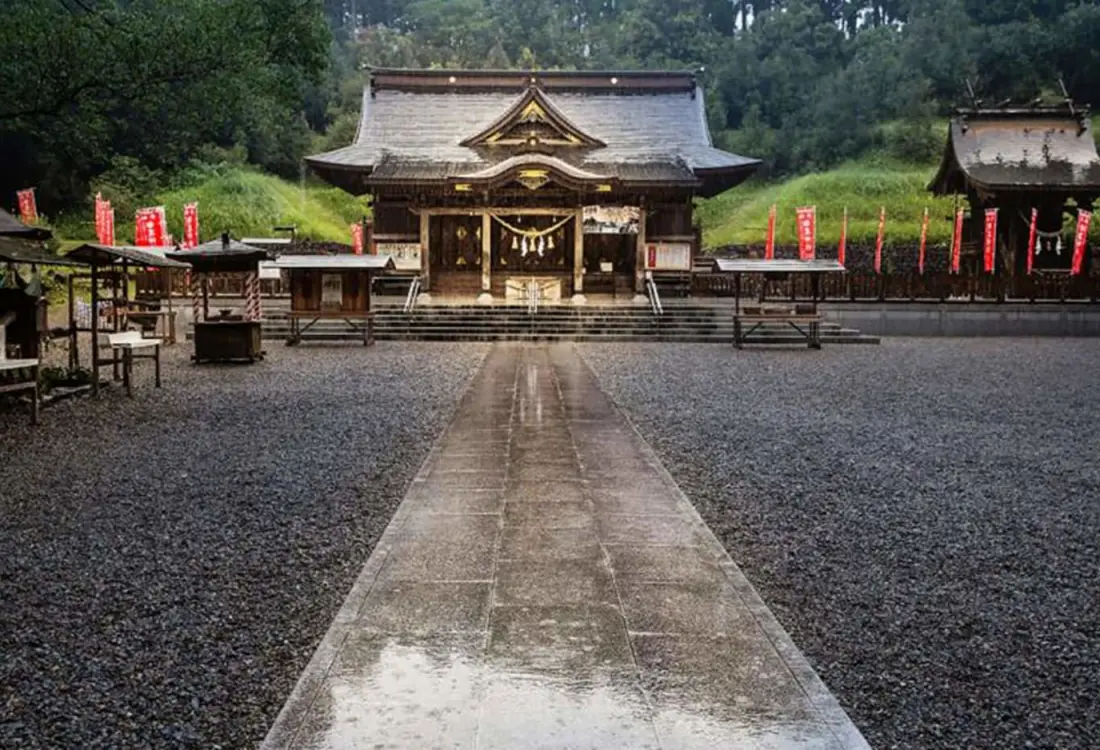
Road to Miyazaki
Having awoken at dawn in Takachiho for what turned out to be a successful viewing of the unkai (“sea of clouds"), a rare phenomenon that requires several climate-related elements to line up in perfect precision, we were counting on the weather gods and goddesses to continue smiling upon us as we headed to the Miyazaki coastal towns of Aoshima and Hyuga.
Driving along, we entertained visions of lounging around in seaside hammocks, slurping mangoes at palm tree-fringed cafés, and generally just soaking up the laid-back beach vibes. As the sky began to cloud over and produce slow, fat rain drops, which soon accelerated to a steady cascade, it became apparent that the weather deities had something else in mind. Clearly, we would have to revert to Plan B.

Still smarting from the disappointment of our tropical fantasies being so rudely thwarted, we were nevertheless somewhat assuaged by the discovery of the Tsuno Winery, located around 30 minutes south of Hyuga by car. If we were going to be obliged to escape the rain showers somewhere indoors, we figured that a winery was probably about as good as it gets.

As we noshed on a selection of meats and cheeses out on the winery's covered terrace, I enjoyed a glass of delicious red (which my companion, who was the day's driver, also sniffed approvingly). The friendly staff came outside at one point to see if we were enjoying ourselves, and following a bit of relaxed banter, they shared with us a bit of the winery's backstory.

Chef Kurogi Sugako told us that the winery faced considerably challenging local conditions, such as heavy annual rainfall and soil that is markedly lacking in nutrients, which makes the achievement of successful winemaking difficult. She said It was somewhat of a feat, therefore, that the Tsuno winery had managed to survive for 21 years.
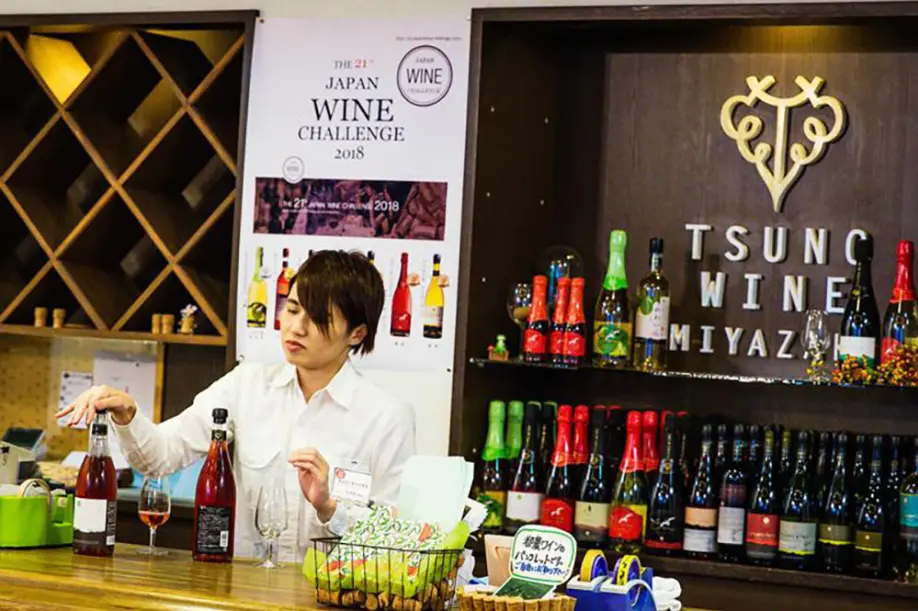
The winery has indeed continued to flourish, producing numerous vintages, and also hosting frequent events for the community such as winery tours, a full moon grape harvesting festival every August, and a spring event featuring candlelit ambience and Indian flute music.
Although the chef told us that the local conditions made it particularly difficult to produce full-bodied wines – something that had, quite honestly, turned me off most Japanese wine to date – my glass of house red featured a deliciously soft, round spiciness that made me reconsider my stance.
Sympathizing with our forfeited day at the beach, Chef Kurogi kindly pointed us toward these twin Shinto shrines, both located in the vicinity of the winery, whose grounds provided lovely vistas on a rain-saturated day.
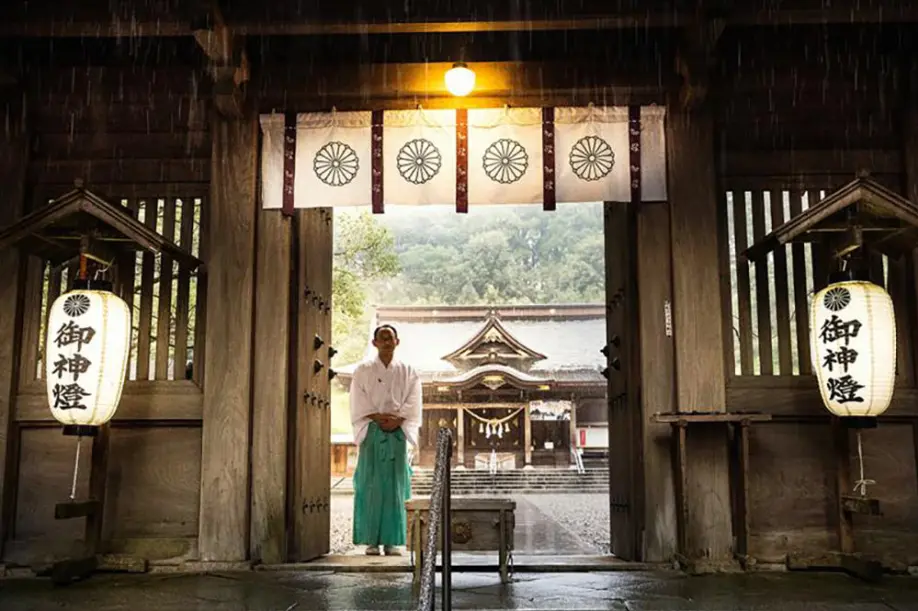
The Tsuno Shrine is home to the deity known as Okuninushi, who oversees the spiritual and mystical realms, and is also a god of abundance, medicine, and business pursuits.
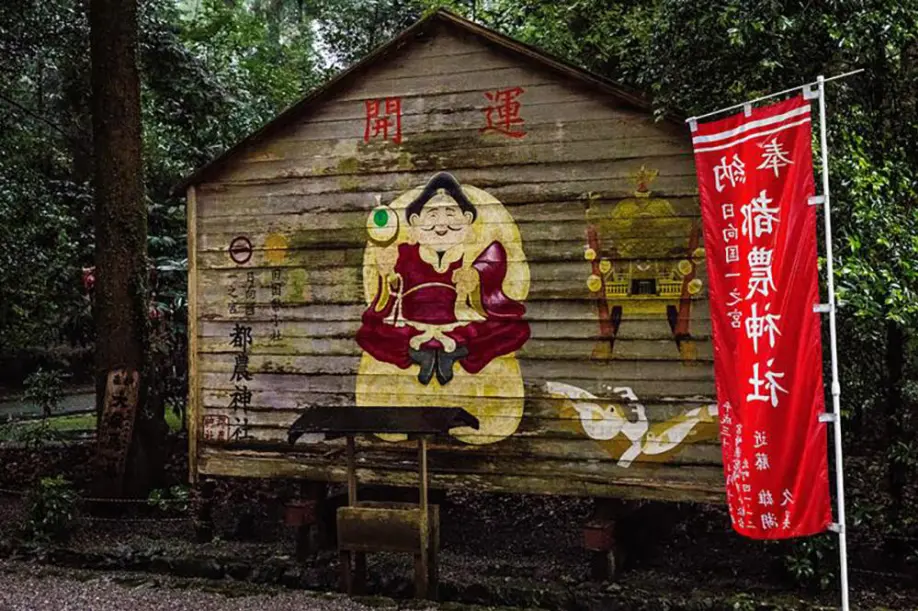
Its sister establishment, the Taki Shrine, which dates back to at least the late 14th century, when it was rebuilt (its original date of construction is unknown), enshrines a water deity known as Takaokaminokami. Although we were not up for climbing the shrine's staircase in the rain, there is also a picturesque waterfall on its grounds – another reason to return to this appealing region for further exploration.

By the time we reached Miyazaki City, darkness had fallen. This provided us with atmospheric views of illuminated city landmarks such as the Medikit Arts Center, which hosts the Miyazaki International Music Festival and various cultural and performing arts-related happenings.

The combination of foul weather and darkness sadly precluded our taking a stroll around the forested grounds of the city's Haniwa Gardens, which is dotted with around 400 replicas of haniwa terra cotta burial statues dating back to the Kofun era (approximately 300 to 538 AD). We did, however, stop to pay our respects to the adjacent Peace Tower.

Understood today to be a symbol of peace, the tower has also been the subject of considerable controversy. Constructed in 1940 to honor Jimmu, Japan's first emperor, the tower's original slogan is associated with the purview of the Japanese military, and some have consequently called into question its legitimacy as a landmark of peace.
All controversy aside, however, the tower – flanked by a full moon and an imposing nighttime sky – was an ideal place to meditate on a peaceful world. We also used the opportunity to give thanks for the day, which, while completely different than the one we had set out to experience, turned out to be full and exciting in its own right.

Photos by Solveig Boergen
Solveig Boergen is a Tokyo-based photographer originally from Germany who has spent more than three decades living in Asia(Japan, China, Hong Kong, Taiwan, Thailand and Nepal). Her work aims to share human stories, and to show realities that might otherwise remain unseen.Besides travel photography, she specializes in portraits that convey deep emotion, such as newborn babies with their families.

Kimberly Hughes
Kimberly Hughes is a freelance writer, translator, and community organizer who is originally from the desert of the southwestern U.S. and has been based in Tokyo since 2001. She is somewhat addicted to global travel, and also loves cooking, gardening and reading.
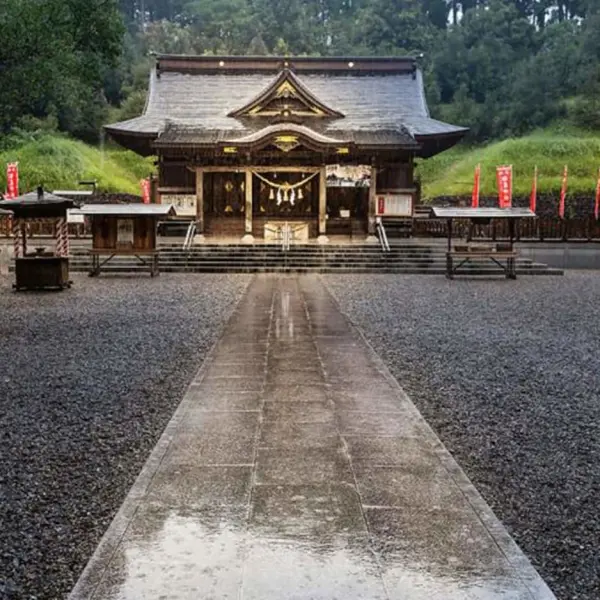 Road to Miyazaki
Road to Miyazaki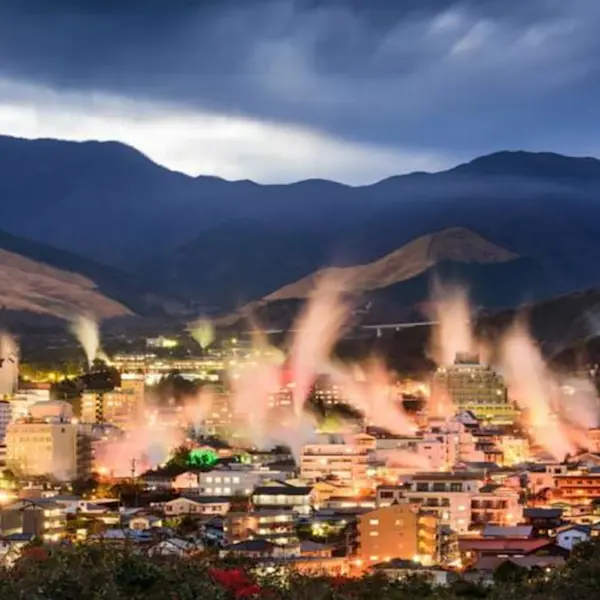 Beppu: An onsen for every taste
Beppu: An onsen for every taste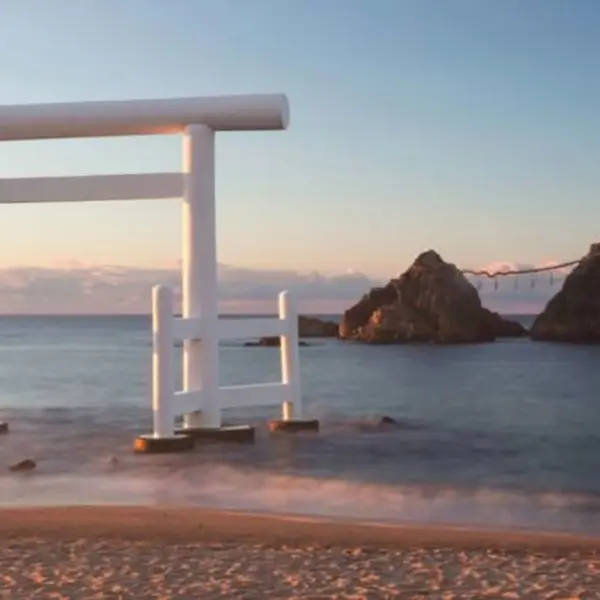 Slow down in Itoshima: Beach Cafés and Unforgettable Sunsets
Slow down in Itoshima: Beach Cafés and Unforgettable Sunsets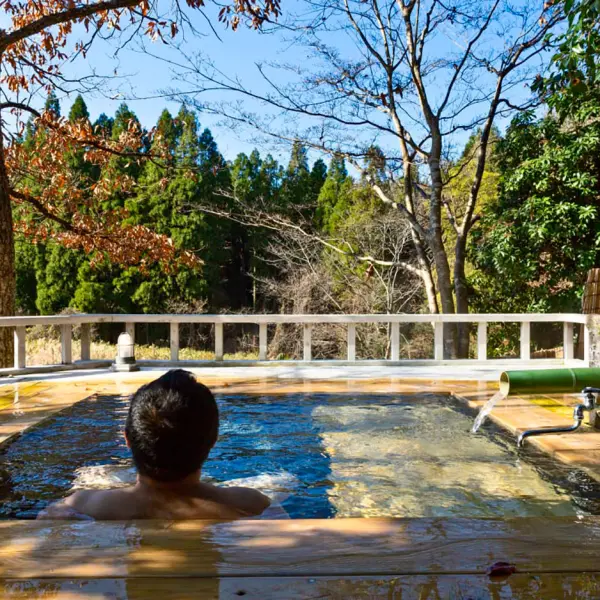 Waita Onsen Village - Spa-Hopping in Kumamoto’s Hot Spring Paradise
Waita Onsen Village - Spa-Hopping in Kumamoto’s Hot Spring Paradise Exploring Saga City and the Sake Street
Exploring Saga City and the Sake Street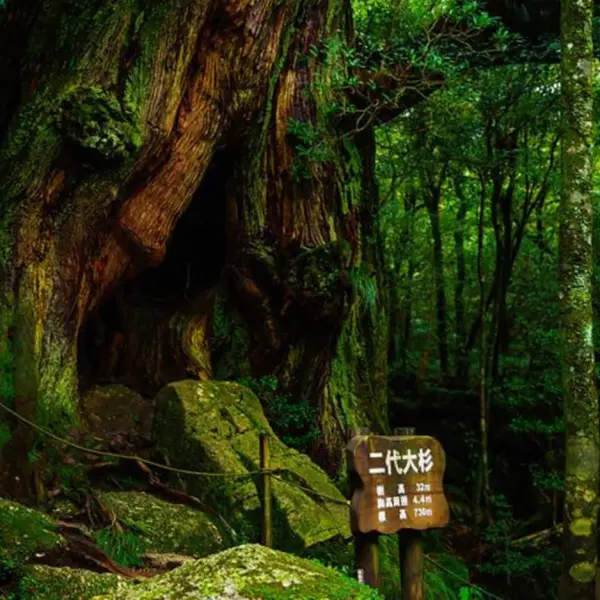 Yakushima: Island of Divinity
Yakushima: Island of Divinity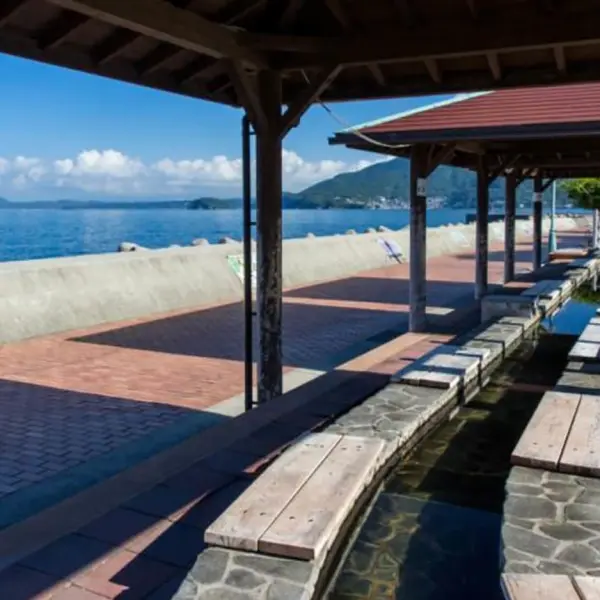 Obama Onsen: A Lovely Hot Spring Town by the Sea
Obama Onsen: A Lovely Hot Spring Town by the Sea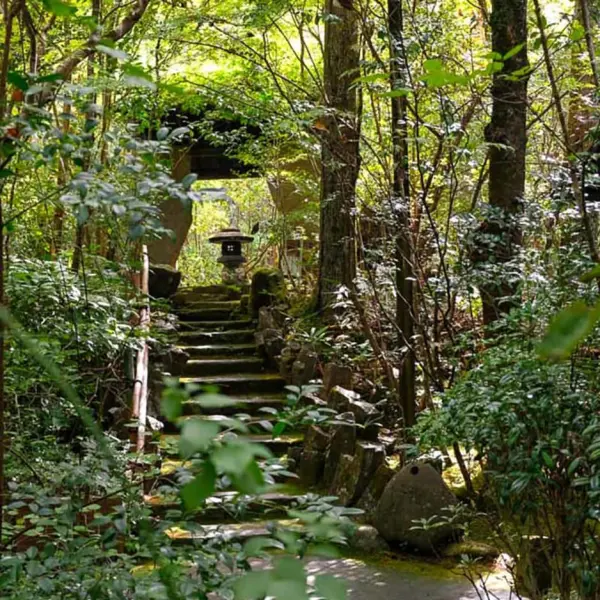 Sanso Tensui: A Luxury Onsen Retreat in the Forests of Oita
Sanso Tensui: A Luxury Onsen Retreat in the Forests of Oita Travel to Goto Islands in Nagasaki - Where Luxury and Convenience Awaits
Travel to Goto Islands in Nagasaki - Where Luxury and Convenience Awaits An onsen paradise – and culinary adventure – at Mount Aso
An onsen paradise – and culinary adventure – at Mount Aso




